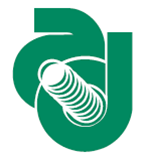Speaker
Filippo Resnati
(CERN)
Description
Graphene is a single layer of carbon atoms arranged in a honeycomb lattice with remarkable mechanical, electrical and optical properties which make this material interesting in a number of applications.
It can be regarded as the thinnest and narrowest conductive mesh, with drastically different transmission behaviours when bombarded with electrons and ions.
Graphene layers of dimensions of about 2x2cm^2, grown on a copper substrate, are transferred onto a metal surfaces with holes of diameters from 30um to 70um and a pitch of the order of 150um, so that the graphene layer is freely suspended.
The graphene and the support are installed into a gaseous detector equipped with a triple Gaseous Electron Multiplier (GEM), and the transparency properties to electrons and ions are studied in gas as a function of the electric fields applied.
The techniques to transfer the graphene from the substrate to the support, and the procedures to measure the charge transmission properties will be described.
First results will be presented, spotting the difficulties arising from the defects in the graphene layers and presenting the solutions to study the intrinsic transmission properties of this material.
We will also discuss the applications where these techniques can be used to improve the state of the art of gaseous detectors.
Authors
Dorothea Pfeiffer
(ESS/CERN)
Eraldo Oliveri
(CERN)
Filippo Resnati
(CERN)
Hans Müller
(CERN)
Joseph Smith
(UCL)
Leszek Ropelewski
(CERN)
Miranda van Stenis
(CERN)
Patrik Thuiner
(CERN)
Richard Hall-Wilton
(ESS)
Richard Jackman
(UCL)
Rob Veenhof
(CERN)
Rui de Oliveira
(CERN)
Silvia Franchino
(CERN)
Thuong Thuong Nguyen
(UCL)

